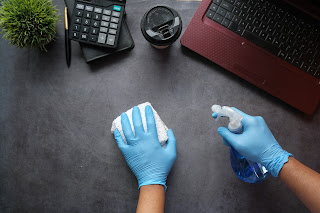Tier List, Everything Edition
We've talked many times about overthinking and the good and bad sides of it, but I want to expand on a particular aspect of it today. Because I've overthought everything, I have a different way of looking at problems than many people do. I am not content to try a solution or two and find my preference.
The Process of Overthinking
I try EVERY solution. I consider EVERY possibility, and I come up with not just my preference, but my ideal of what is truly objectively best. Fueled by actually putting ridiculous amounts of thought into each option, I find myself to be very stubborn. My opinion is best and it's incredibly hard to change that.
Having said that, I don't think myself a genius. I just put in enough work to any opinion I have that I feel very comfortable with. I question everything, research everything, and gather other people's input and opinions. I don't just think I'm right. I do everything I can to MAKE SURE I'm right. Now there are lots of times when I don't have an opinion, simply because I don't feel I know enough about it to have an opinion.
The Benefits of Overthinking
All this is good or bad depending on the situation. On the one hand, it's great that I look for all the info. I am not easily fooled, I don't blindly follow anything. I'm basically immune to cults and deception, and marketing for that matter. I make sure my info is good, and if I don't have enough info, I don't join the conversation.
The Drawbacks of Overthinking
On the other hand, I find myself stuck striving for ideals. I know in my head the right way and I find it hard to settle for anything less. Take the dishes for example. Simple enough task, there's no right or wrong way, right? Well sure there are some basic rules, I guess. Cups on the top, plates and big stuff on the bottom. But that's not enough for me. First, the top of mine has 4 rows wide enough for cups, and one wider row in the middle. So cups on the outer two rows of both sides. Then I can fit a row of bowls in the middle. Bowls need to have enough spacing so water gets between to clean, so 2 of the little rack lines between every bowl.
Overthinking Example: Doing the Dishes
Then we get to the bottom. Well, plates go in the row farthest back since they're easy to pull in and out. If I have a big awkward pot in the back, it's hard to get at it because the top rack is still there when I'm reaching to the back. Obviously big plates at the end of the row, down to the smaller plates. Then let's talk silverware. The way to make sure each fork and spoon gets the most clean is to make sure they are evenly distributed. But also big utensils might block the water flow. So my silverware thing has 6 divided areas. The last 2 are for bigger utensils. Then every other fork spoon and knife is divided evenly into the last 4 spots.
All this is well and good, I think (for my dishwasher) this is the optimal or ideal arrangement to get the best cleaning results. I've thought so much about it that it's now routine, practically intuition for me. But my kids are starting to get to the age where they can help with dishes (THANK GOD). They don't have the same intuition or routine I have. They haven't had physics class. They aren't visualizing in their head the 3-dimensional distribution of soap and water from the jet spray arms.
Closing Thoughts
This won't make sense to them the way it makes sense to me. Sure I can teach them how I do it, but my perspective and reasoning aren't so easy to teach. So I come off as a stubborn know-it-all who might have OCD. I don't yet have a solution to this, and my kids are getting older, so if you have an idea of transferring perspectives or settling for less-than-ideal, I'm all ears!
With love and insanity equally,
J.M.




Comments
Post a Comment